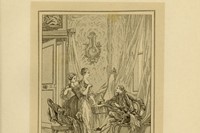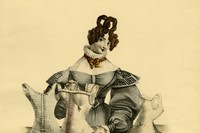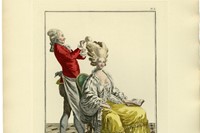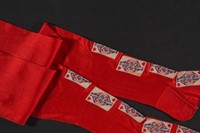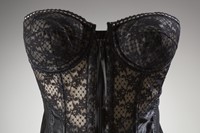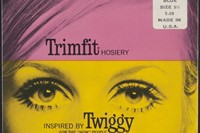From the most elaborate corset to the first brassiere, AnOther consider the history of lingerie
Underwear has come a long way since the days of linen drawers and crinolines, be it Ralph Fiennes slicing into Keira Knightley’s boned pannier and petticoat in The Duchess or Hailey Clauson poised as a sexed-up 1950’s housewife for the latest Agent Provocateur campaign. As personal as it is necessary, the art of undressing is key throughout history. To mark Colleen Hill’s latest book, Exposed: A History of Lingerie, AnOther considers the transformation of undergarments, tracing their elaborate history from the 18th century to today.
Quilted Petticoat
The versatile quilted petticoat is more impressive when you remember that at the time of its birth, 1795, the sewing machine had not yet been invented and all stitching was done by hand. Ubiquitous throughout the Rococo period, individual versions were passed down through the generations of a family. And while women have long dismissed it from everyday wear, the petticoat is frequently reinvented within modern fashion from Alexander McQueen’s theatrical versions to Jil Sander’s delicate flounces.
The Corset
With its rigorous fastenings and controversial viewpoints, the corset is a landmark within the history of lingerie and in dress. Long before Jean Paul Gaultier, Madonna and Vivienne Westwood championed corsetry in the mid '90s, it was an integral component of everyday dress during the eighteenth century. Using whalebone and sometimes steel, the corset straightened the back, pulled in the waist and increased the bust. Although originally a garment of propriety, it has always held both an erotic and artistic allure: the art of lacing and unlacing the corset is noted throughout Renaissance painting.
The Bustle
With 1860 arrived that most obvious of undergarments: the bustle. Designed to emphasis the posterior, it contrasted exquisitely with a tightly pinned waist, and ranged from classic hoops to elaborate embellishment. Raf Simons resurrected the age-old style for Dior’s S/S14 show in floral botanical prints, while Vivienne Westwood has frequently looked to the Victorian period for her parody of establishment styles, and is known to have spent many hours in the V&A studying historical dress.
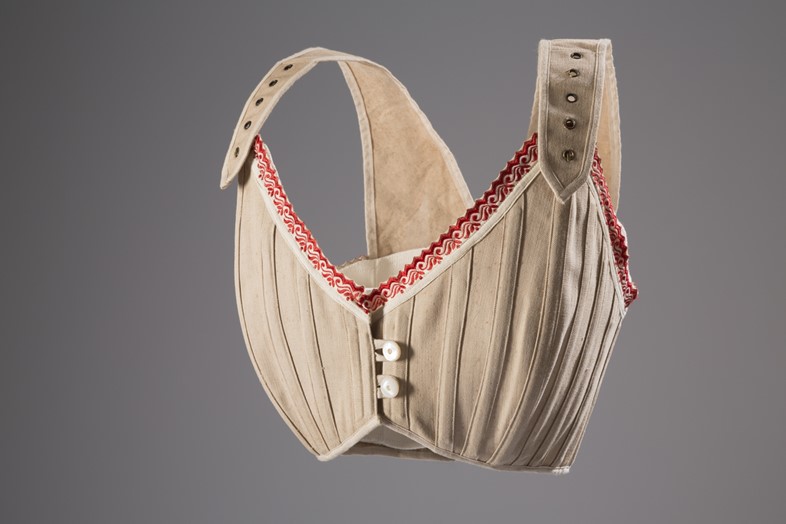
The Bra
Although archaeologists have discovered that the humble bra potentially dates as far back as the 15th century, it didn’t come into play until the 20th century. The soft design was originally patented in 1914 by Mary Phelps Jacobs and popularised by metal shortages during the war.
Stockings
A Dita Von Teese trademark, the seductive allure of stockings crops up throughout fashion history, from pin-up Bettie Page’s flirtatious photographs throughout the 1950s to Mrs Robinson’s stocking-covered leg on the poster for The Graduate in 1967. But, before hemlines rose, stockings were a discreet yet rebellious glint of self-expression during the 19th century, featuring decorative insets, embroidery and bright motifs.
The Slip
As delicately slinky as it sounds, the slip was originally designed by French couturiers to be worn under dresses. They became fashionable in the 1920s as manufacturers developed new, breathable fabrics.
The Girdle
The descendent of the corset, the girdle was considered an essential garment between 1920 and 1960, to create a rigid, controlled figure necessary to pull off Dior’s New Look and the rippling fashions that followed.

French Knickers
Evolving from the loose drawers of the Victorian era and Can-Can dancers of the period, French knickers were commonplace by the 1940s, championed by pin-ups such as Bettie Page and Betty Grable. The modern day French brief is now a boy-short everyday classic.
The bodysuit
The bodysuit first surfaced in the 1960s as the new control-undergarment, following on from the teddy (camiknickers). Azzedine Alaia and Donna Karan brought it to prominence again in the 1980s, this time as outer-wear. It has become a signature jersey piece for Karan, along with the wrap dress.
G-String
A history of underwear would not be complete without referencing this little piece of material. Rudi Gernreich is credited for introducing the slight garment to the masses in 1974. The 1990’s saw a questionable trend arise for exposing the top of one’s thong above the waistband of jeans, a decision that haunts many, and inspired Sisqó to write a rhapsodic song.
Exposed: A History of Lingerie by Colleen Hill is out now, published in association with The Fashion Institute of Technology, New York.
Text by Mhairi Graham

